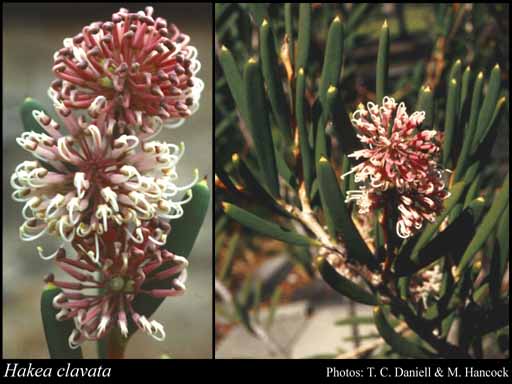- Reference
- Nov.Holl.Pl. 1:31 (1805)
- Conservation Code
- Not threatened
- Naturalised Status
- Native to Western Australia
- Name Status
- Current
Spreading to almost sprawling, lignotuberous shrub, 0.5-2 m high, up to 2.5 wide. Fl. white-pink, Jan to Oct. Sand, sandy clay, roaky or stony soil, granite. Granite outcrops.

Scientific Description
Shrubs, 0.7-2 m high; branchlets hairy. Leaves alternate, 30-65 mm long, 4-8 mm wide, glabrous; lamina flat, more or less the same width throughout, entire. Inflorescences terminal, white or pink; pedicels 6-8 mm long. Perianth 6-9 mm long, glabrous; ovary glabrous; pistil 8-10 mm long, pollen presenter oblique, style glabrous. Follicles 15-25 mm long, 9-10 mm wide, corky tetrahedral projections (on external surfaces of fruit) absent; seed 16 mm long (including wing), the wing discontinuous, marginal, extending ± unequally down each lateral side. Flowers in January, February, March, April, May, June, July, August, September or October. Occurs in the Eremaean (ER) or South-west (SW) Botanical Province(s), in the Coolgardie (COO), Mallee (MAL) or Esperance Plains (ESP) IBRA subregion(s).
Distribution
- IBRA Regions
- Coolgardie, Esperance Plains, Mallee.
- IBRA Subregions
- Eastern Mallee, Fitzgerald, Mardabilla, Recherche.
- IMCRA Regions
- Eucla, WA South Coast.
- Local Government Areas (LGAs)
- Esperance, Ravensthorpe.